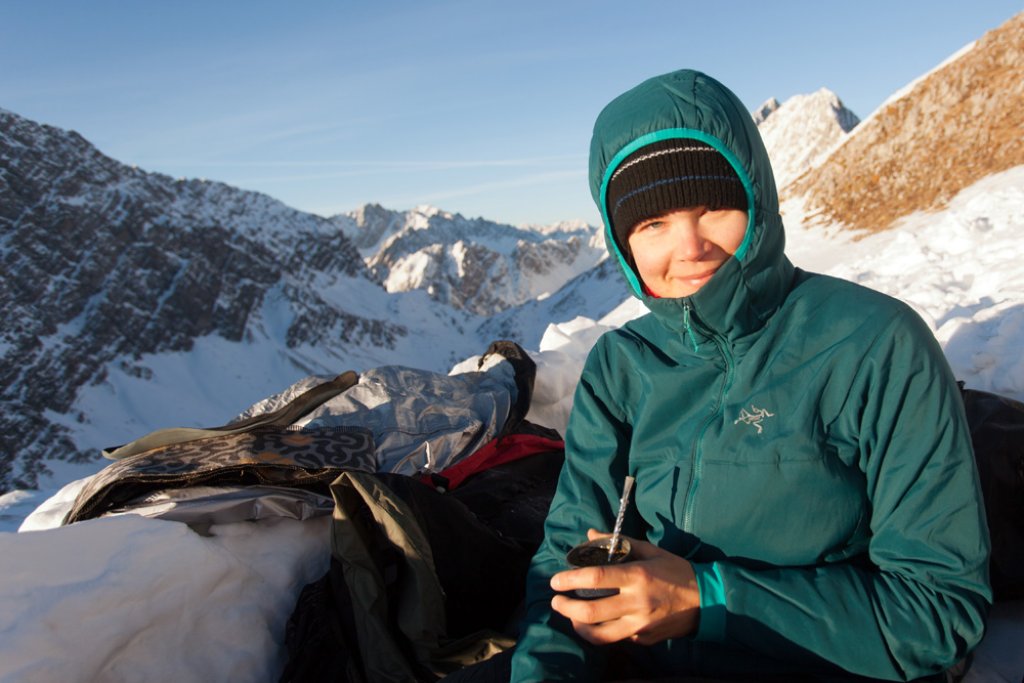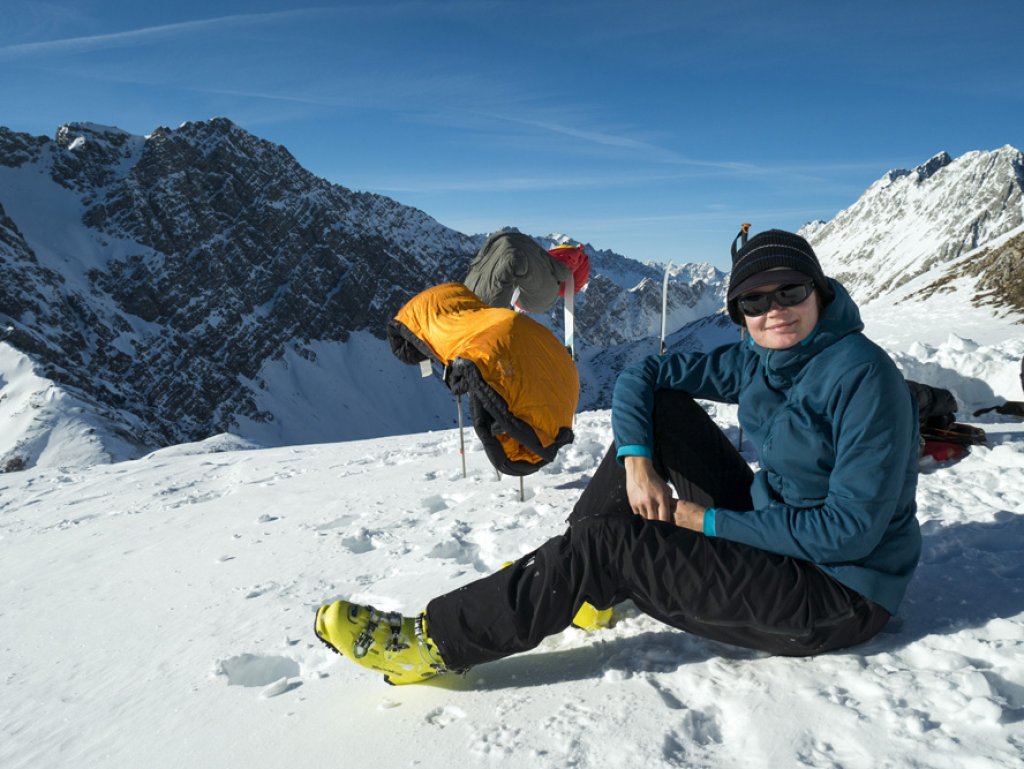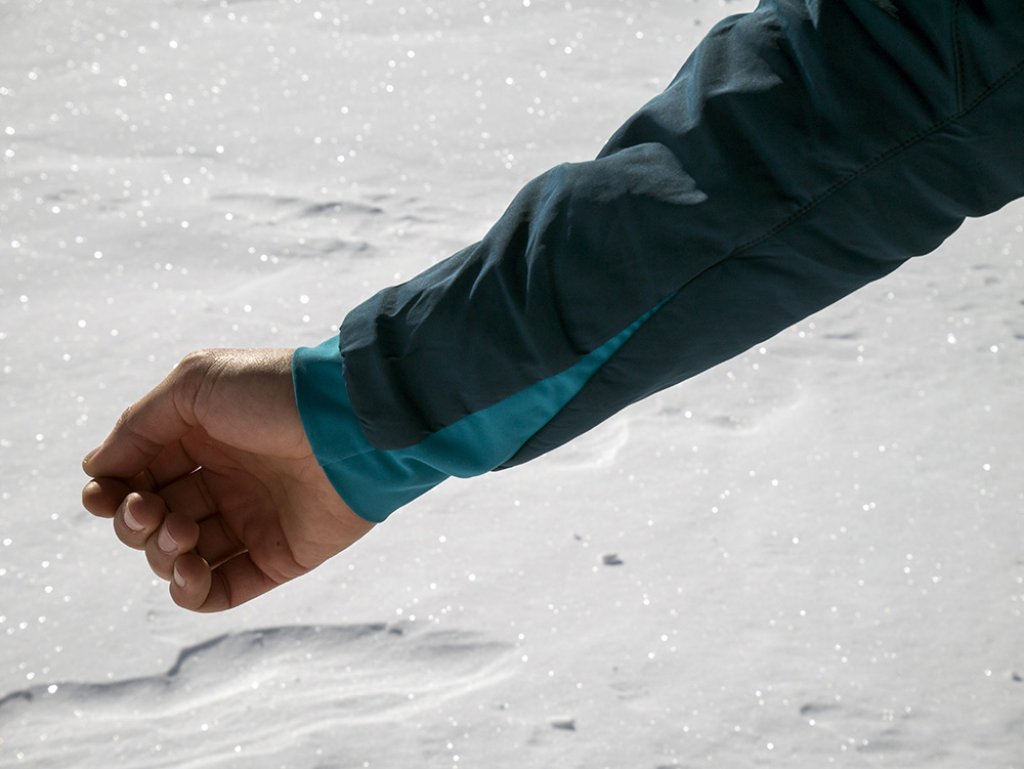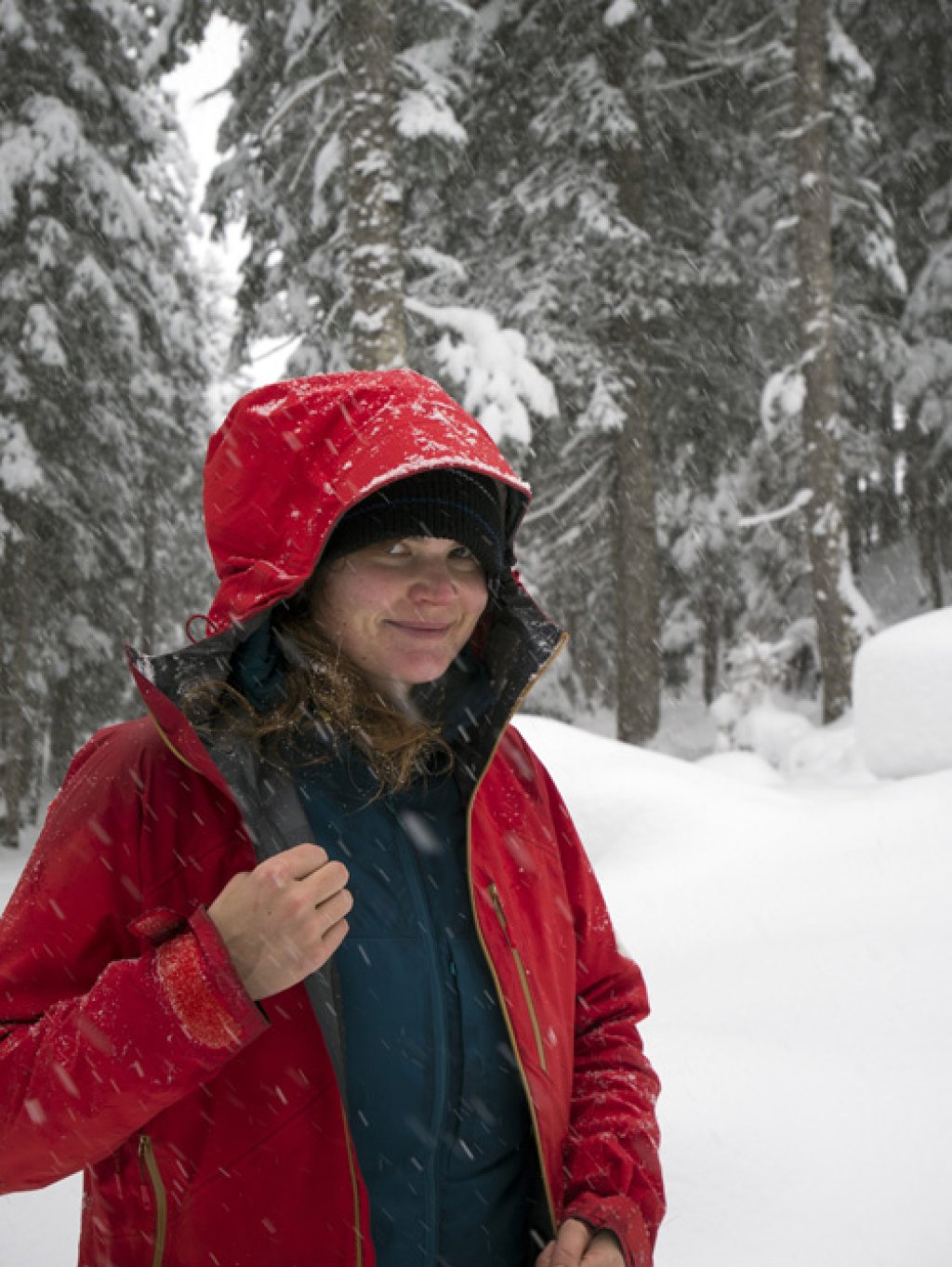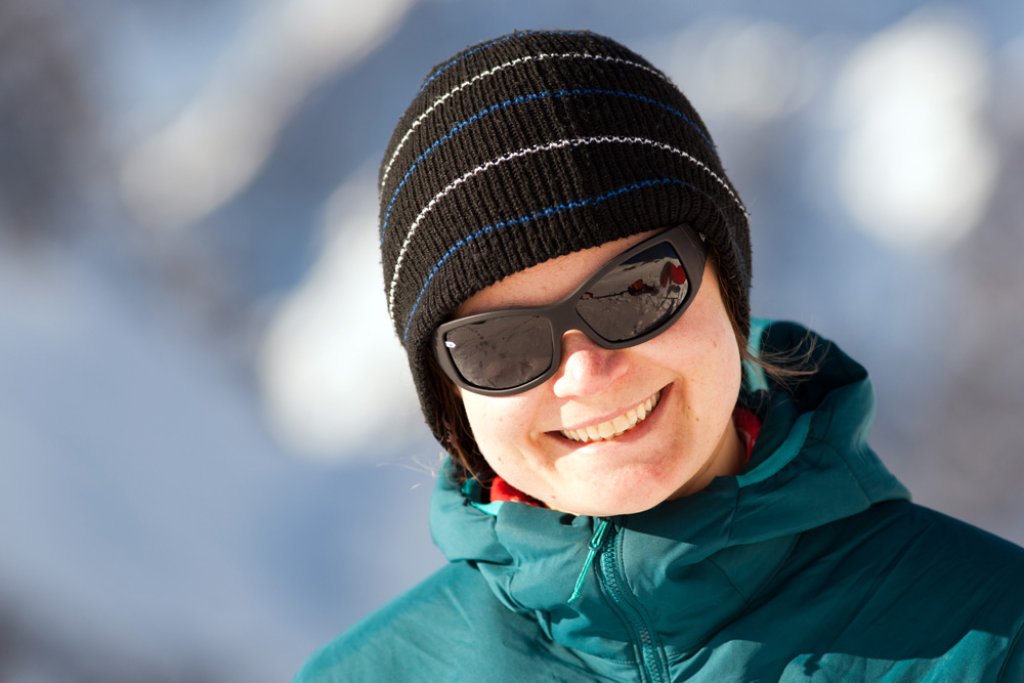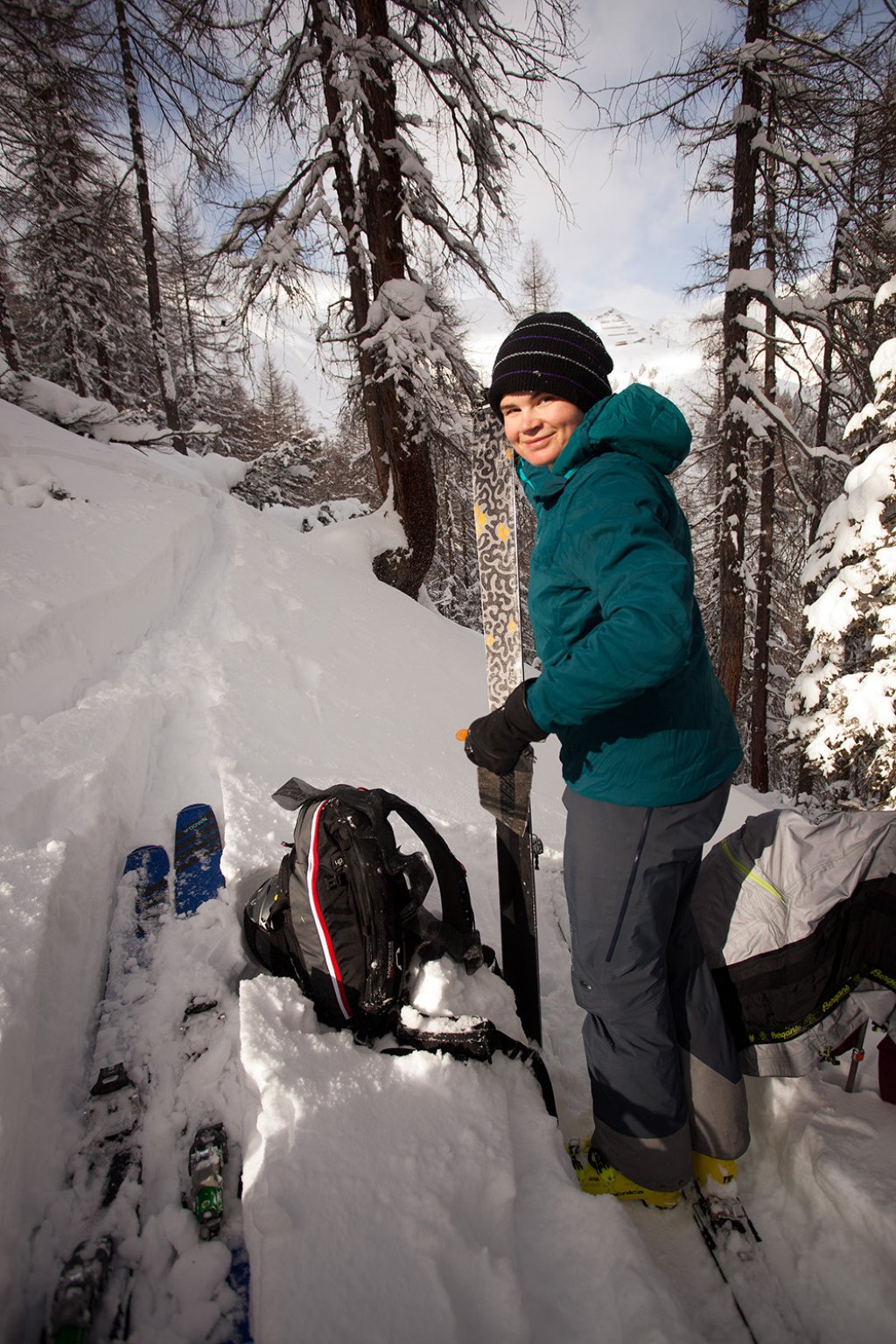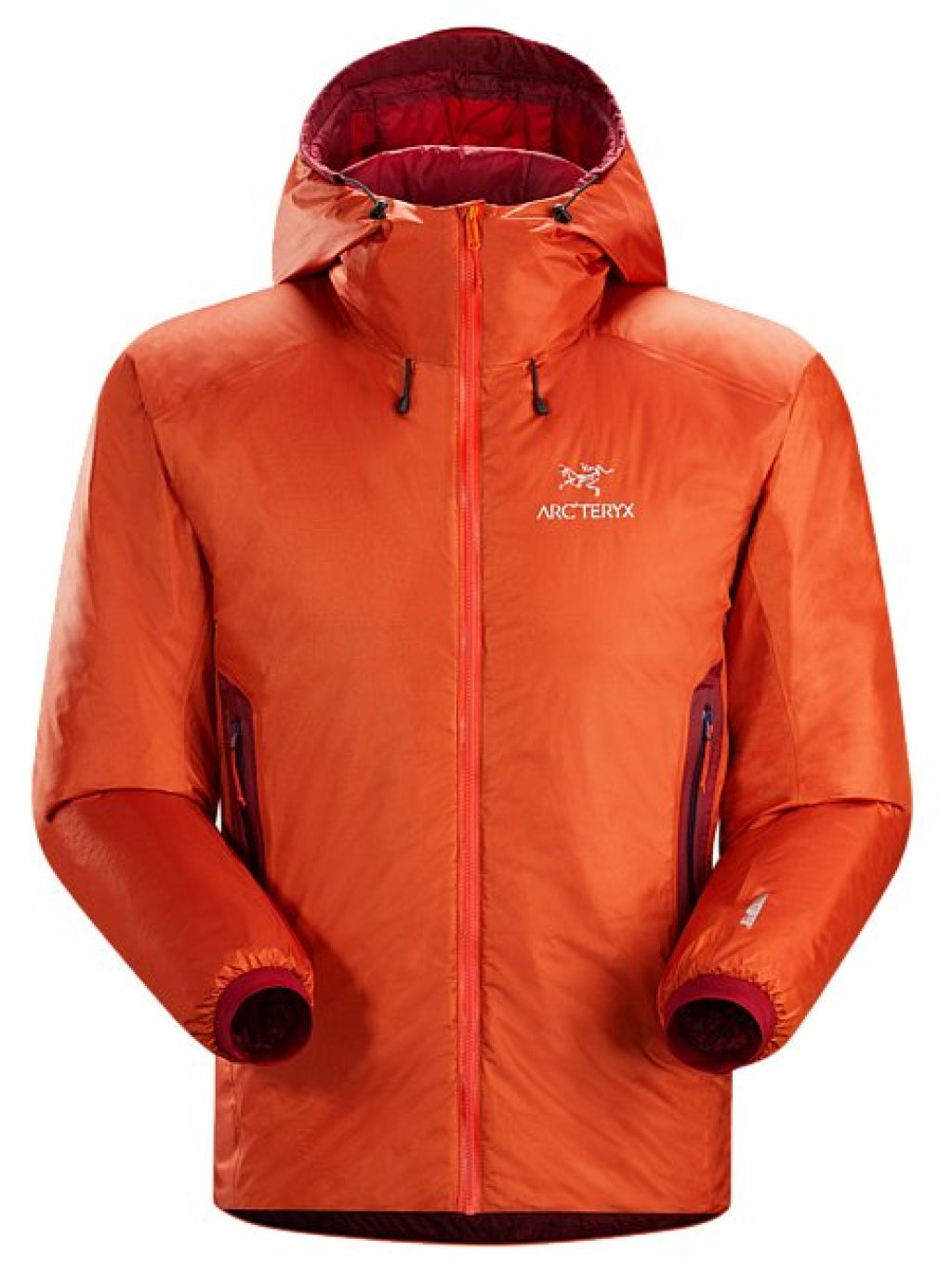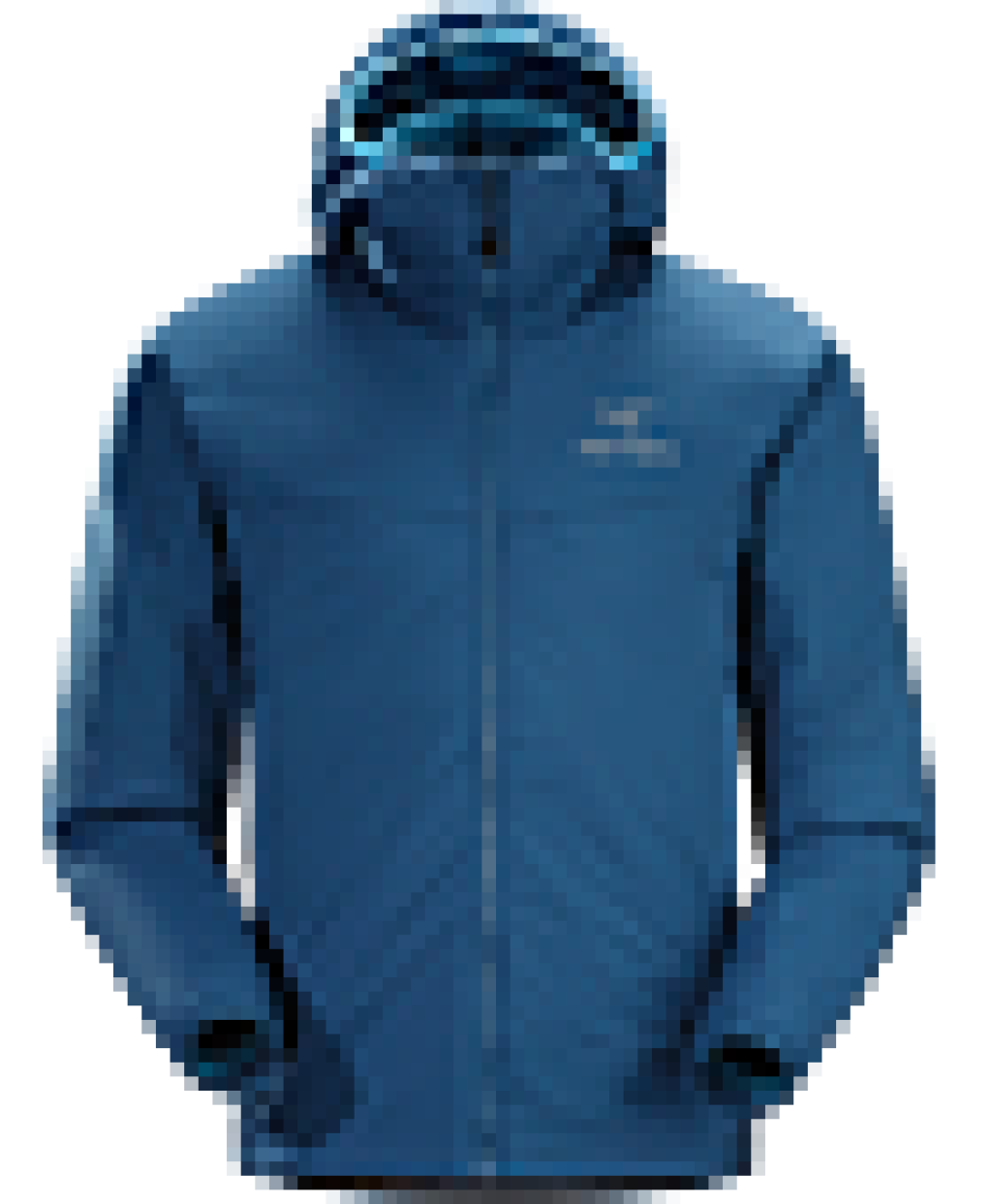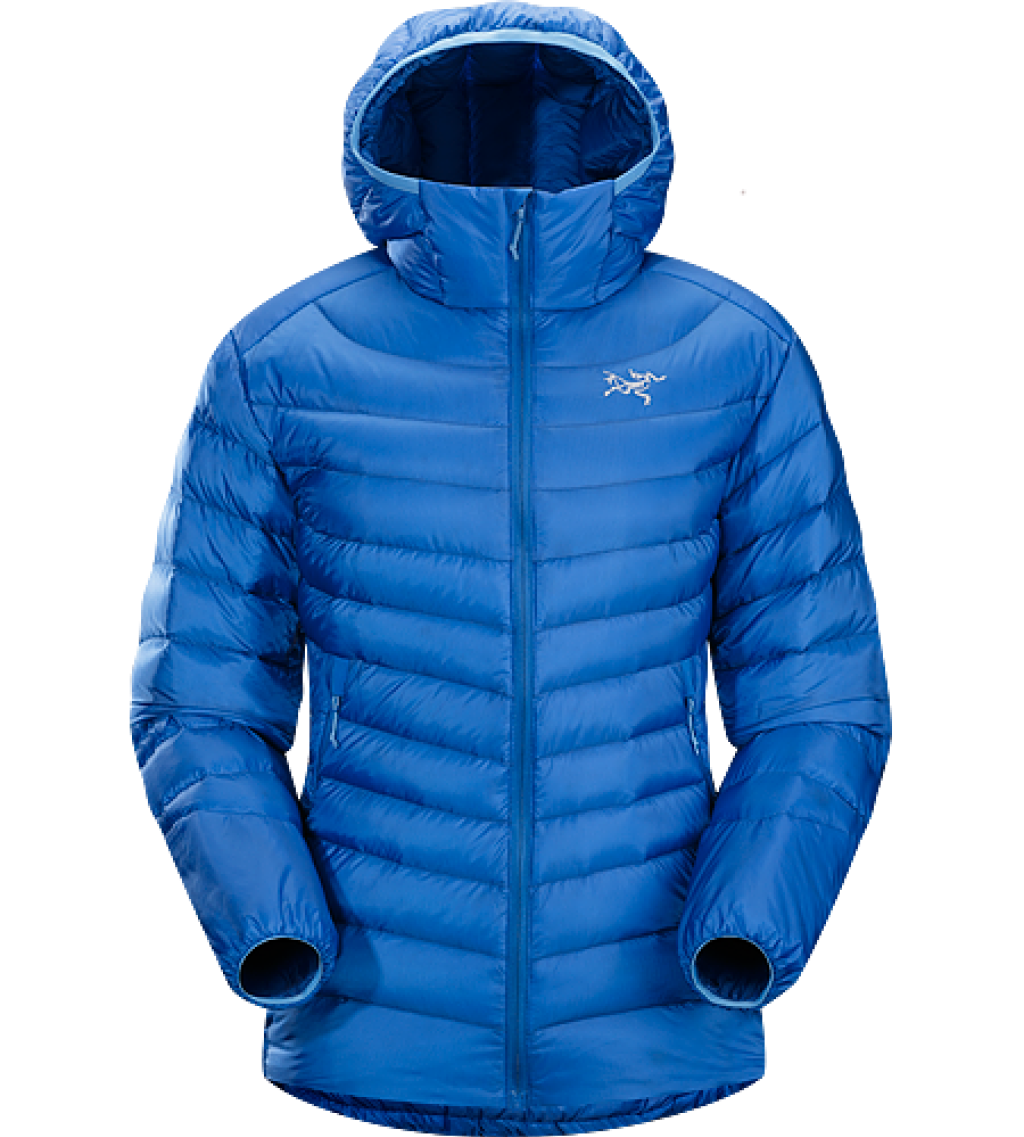As usual with Arc'teryx, the jackets are available in AR (all-round - slightly heavier, slightly more robust material) or LT (light) versions, each with and without a hood. I tested a Proton LT Hoody in the women's version. I am just over 180 cm tall and wear the women's model in size L. The jacket is cut relatively close to the body, but not tight. The men's models have a much wider cut. The fit seems to me to be the same as the other Arc'teryx insulation jackets (Atom, Nuclei). Both the men's and women's models are rather large in my opinion. A clear indication of this is the fact that the sleeves of the women's model are not too short for me either.
Features
The Proton LT Hoody has two zippered slit pockets and a smaller chest pocket, also with a zipper. The lower hem can be tightened with an elastic band, as can the back of the hood. The hood is not adjustable at the front around the face, but it fits fairly snugly anyway. The hood fits over my ski helmet. The sleeves have pre-shaped elbows and elastic cuffs that fit well at the wrist.
The main difference between the otherwise very similar Proton and Atom series (here is a review of the Atom LT) lies in the breathability. Like the Atom and Nuclei, the Proton jackets are lined with the company's own Coreloft™ synthetic insulation, but the Proton series uses a combination of Coreloft™ and the more breathable Permeair™ material. The outer material of the Proton series also has a water-repellent DWR coating, but is also more breathable than the Atom series. The Nuclei series is generally warmer and more weatherproof.
The purposes of the different jackets can be summarized as follows: Nuclei is worn when standing around in the cold (e.g. belaying); Atom when standing around in less cold temperatures or moving around but not sweating (e.g. downhill); Proton when moving around in the cold (e.g. climbing in very cold conditions).
